We have just spent 3 days in Parque Nacional Torres del Paine, a park that some guidebooks call the best national park in South America. We arrived on the Navimag steamer in drenching rain and wind and wandered the streets in Puerto Natales until we found our hostal, Quatro Elementos (http://www.4elementos.cl/english/index.htm). Rodrigo runs this hostal partly for visitors like us, and also as a staging area for research trips into the mountains, glaciers and ice caps of this region. Many here are proud to point out that the adjacent ice cap (ventisquero) is the third largest reservoir of fresh water on the globe after Antarctica and Greenland.
Rodrigo is quite a curious individual. He is self-made in almost every way. He has learned quite serviceable English and has developed very refined ideas and actions regarding “Reduce, Reuse and Recycle”. His hostal is all reused and recycled materials from covering the adobe-filled walls of the building with castoff tin sheets that the English brought a hundred years ago to a new addition with posts and beams from cypress telephone poles, also from 100 years ago.
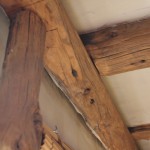
Among many projects, Rodrigo compacts bales of various recyclables and then Navimags them north using trucks that have come south with food and consumer goods and are going back empty. He is also an excellent cook; today’s breakfast had real expresso coffee (not the usual instant Nescafe) and whole grain crepes filled with melted cheese and marmalada. Very delicious!
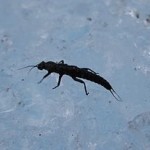
Rodrigo suggested a way for us to see some of Torres del Paine and we went off by bus for the park which is about 100 miles north of Puerto Natales. While we were gone, Rodrigo gathered food and camping equipment for a group of 9 Japanese scientists who are coming for a week of living on the South American ice cap in a search for a strange insect, the “dragon of Patagonia” Andiperla willinki, which thrives in the eternal freezing cold and the hurricane force winds that are so common here. (Wikipedia photo of a willinki).
The bus dropped us at a lake where a catamaran took us on a 30 minute 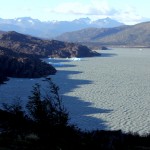 speedy ride to a refugio (Paine Grande) where we stayed for two nights while doing day hikes. “Paine” is a now extinct local Indian tribes’ name for this place. Paine, pronounced “Pi Nay”, means grey, and it certainly captures some of the color in this dramatic landscape.
speedy ride to a refugio (Paine Grande) where we stayed for two nights while doing day hikes. “Paine” is a now extinct local Indian tribes’ name for this place. Paine, pronounced “Pi Nay”, means grey, and it certainly captures some of the color in this dramatic landscape.
 “Dramatic” also describes the furious winds. A little less than 3 months ago a fire accidentally was started upwind from our lodge and it swept through the shrubs and low trees, propelled just as we were by winds of more than 50 km/hr. At the refugio, staff told us that they abandoned the place as the fire approached and when they returned, everything except the lodge was gone! Shrubs, trees and even the roots underground were consumed in this fierce conflagration. At times the smell of burned materials was strong as we hiked along numerous rolling-contour trails. It was sad to see such destruction, but we also frequently noticed tiny green signs of recovery appearing on the charred landscape.
“Dramatic” also describes the furious winds. A little less than 3 months ago a fire accidentally was started upwind from our lodge and it swept through the shrubs and low trees, propelled just as we were by winds of more than 50 km/hr. At the refugio, staff told us that they abandoned the place as the fire approached and when they returned, everything except the lodge was gone! Shrubs, trees and even the roots underground were consumed in this fierce conflagration. At times the smell of burned materials was strong as we hiked along numerous rolling-contour trails. It was sad to see such destruction, but we also frequently noticed tiny green signs of recovery appearing on the charred landscape.
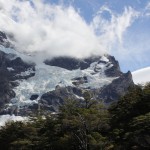 Did we mention that it is WINDY here? Look at these lenticular
Did we mention that it is WINDY here? Look at these lenticular  clouds — sure signs of high winds aloft. Our hike to look at Glacier Grey was an upwind battle, foreshadowed by beautiful lenticular clouds the previous day. We walked through protected valleys and then over very exposed passes where you could lean 30 degrees into the wind – until it shifted a bit as it did every couple of seconds! (At one point near the end of our second day’s hike Leslie was unexpectedly hit by a terrific gust from the side; she caught herself with her trekking pole before falling on her side. Fortunately only the pole was injured….) Regardless, it was quite a thrill to see massive ice flows breaking into icebergs with mountains all around as we squinted through watering eyes.
clouds — sure signs of high winds aloft. Our hike to look at Glacier Grey was an upwind battle, foreshadowed by beautiful lenticular clouds the previous day. We walked through protected valleys and then over very exposed passes where you could lean 30 degrees into the wind – until it shifted a bit as it did every couple of seconds! (At one point near the end of our second day’s hike Leslie was unexpectedly hit by a terrific gust from the side; she caught herself with her trekking pole before falling on her side. Fortunately only the pole was injured….) Regardless, it was quite a thrill to see massive ice flows breaking into icebergs with mountains all around as we squinted through watering eyes.
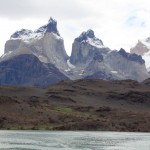 The Torres del Paine massif is very
The Torres del Paine massif is very 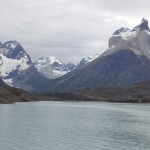 new on the geological timeline. In the dry and brown wide-open landscape on the east side of the Andes we saw rhea looking just like ostriches to which they are closely related. We viewed lots of guanacos, relatives of the alpacas and llamas, and noted that these wild camelids are much gentler grazers than the frequent flocks of sheep we saw. Australia and South America were connected and the marsupial and ostrich relatives thrived. Much later mammals arrived from the north and only a few of the Austrailian fauna survived. Sixty million years ago the Andes popped up and just 6 million years ago the Torres del Paine pushed sedimentary layers up into the sky. The Cuernos (horns) look like layers of vanilla and chocolate with icing on the top.
new on the geological timeline. In the dry and brown wide-open landscape on the east side of the Andes we saw rhea looking just like ostriches to which they are closely related. We viewed lots of guanacos, relatives of the alpacas and llamas, and noted that these wild camelids are much gentler grazers than the frequent flocks of sheep we saw. Australia and South America were connected and the marsupial and ostrich relatives thrived. Much later mammals arrived from the north and only a few of the Austrailian fauna survived. Sixty million years ago the Andes popped up and just 6 million years ago the Torres del Paine pushed sedimentary layers up into the sky. The Cuernos (horns) look like layers of vanilla and chocolate with icing on the top.
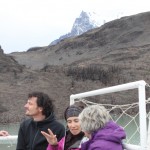 Coming as we did on the Navimag boat from Puerto Montt, we have become part of a recognizable group of adventure travelers. On the second night, our room at the refugio was filled with fellow travelers, including the tall Swiss man with whom we had spoken on the boat and a couple comprised of an athletic fellow from Holland and a petite, energetic woman from Hong Kong. We met for the third or fourth time a lovely pair of newlywed Australians, Matt and Georgia, and had several conversations at different times with a spirited French couple. The sort of people who travel on the Navimag make the same sorts of choices of places to stay and to hike. What a pleasure to meet such kindred spirits!
Coming as we did on the Navimag boat from Puerto Montt, we have become part of a recognizable group of adventure travelers. On the second night, our room at the refugio was filled with fellow travelers, including the tall Swiss man with whom we had spoken on the boat and a couple comprised of an athletic fellow from Holland and a petite, energetic woman from Hong Kong. We met for the third or fourth time a lovely pair of newlywed Australians, Matt and Georgia, and had several conversations at different times with a spirited French couple. The sort of people who travel on the Navimag make the same sorts of choices of places to stay and to hike. What a pleasure to meet such kindred spirits!
*Note: Many of you have written to tell us that you are especially enjoying our photos. Thanks for all of your comments. We are a team when taking the pictures. You might predict that Val takes more of the landscape shots, while Leslie loves using the telephoto to produce more abstract shots of colors and textures, but we both do all types of experimenting with our Canon especially with the 400 mm stabilizing telephoto lens. Plus, we’re both getting pretty quick (after a lot of editing practice!) with cropping and contrast adjustments. Tomorrow we head further south along the Straits of Magellan and Tierra del Fuego on another boat, ending in Ushuaia.
[shashin type=”album” id=”27″ size=”small” crop=”n” columns=”max” caption=”y” order=”date” position=”center”]


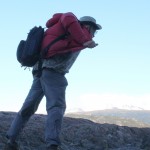

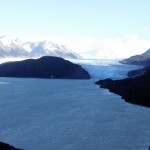
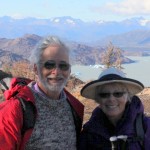
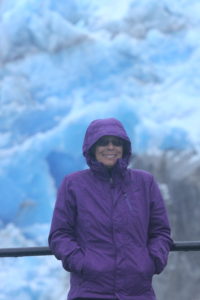
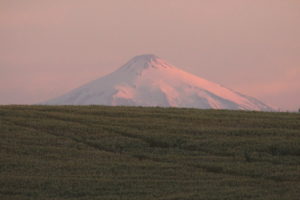
Carol & Dave
22 Mar 2012What an adventure you are having! We have loved taking a virtual tour of Chile and other places through all your wonderful photos and descriptions of people, wildlife, and scenery. How did you keep your hats on in all that wind in Torres del Paine?? Since you keep going south, have you figured out a way to go to Antarctica?
Have fun, Carol & Dave
Ann & Johndale
12 Jun 2012https://leslieval.com/2012/03/23/chasing-rainbows-at-the-end-of-the-world/